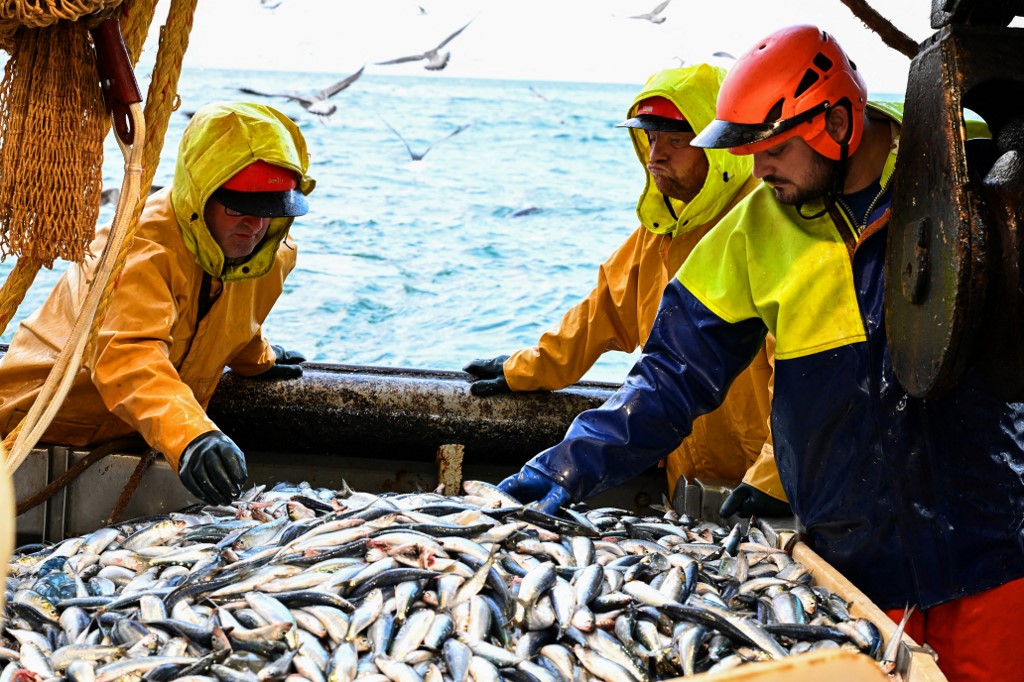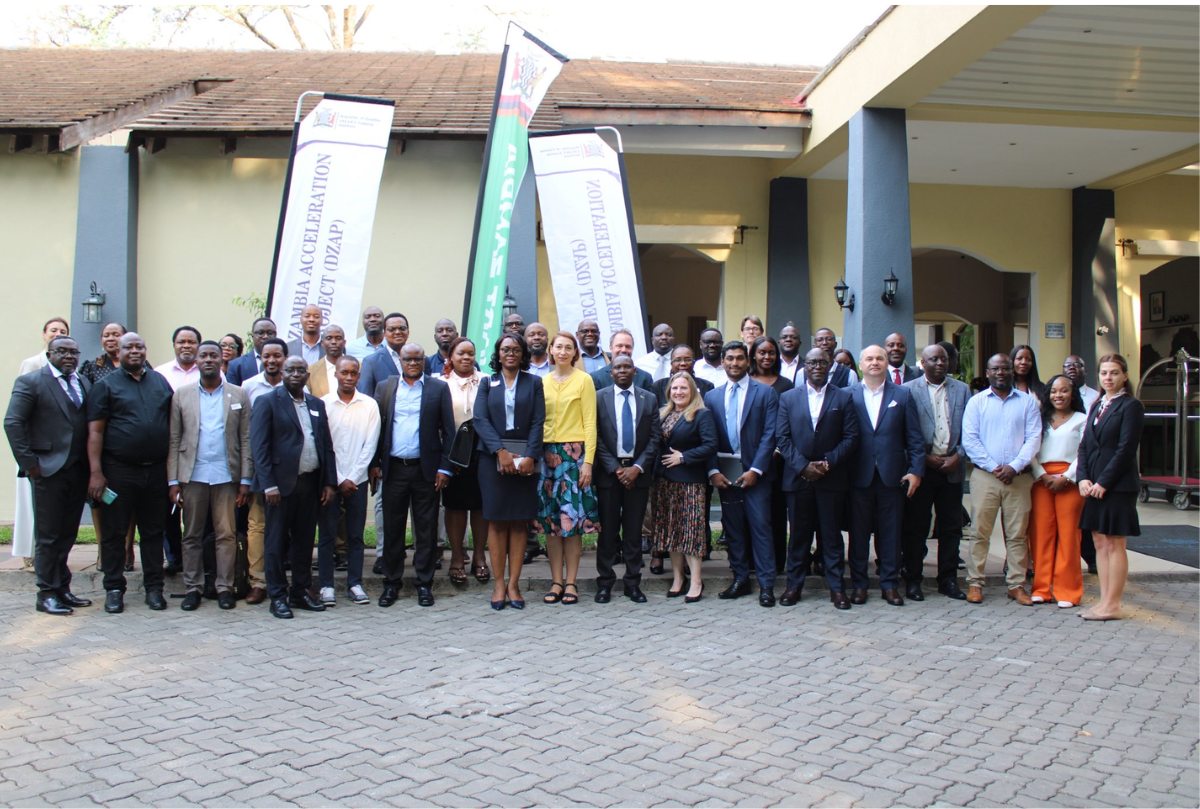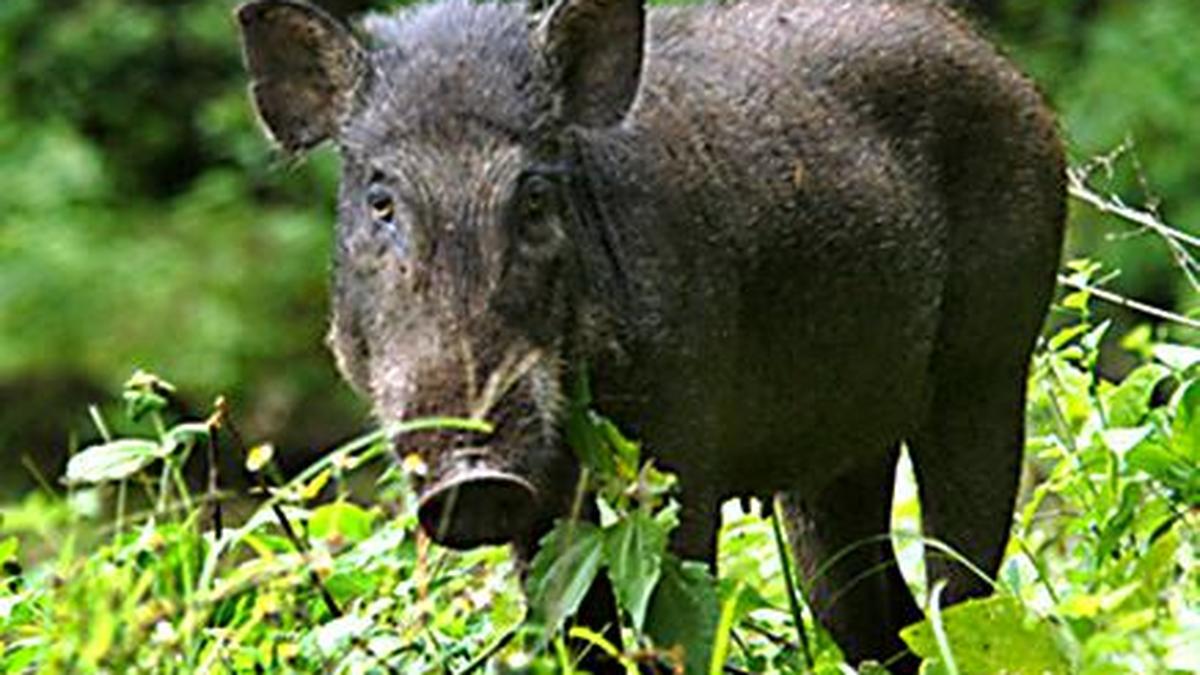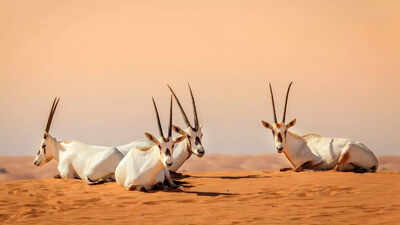New list of primates in peril aims to focus attention and inspire action – Mongabay

Report on the 2025-2027 ‘Primates in Peril’ List and its Alignment with Sustainable Development Goals
Introduction: A Call to Action for Global Biodiversity
The International Primatological Society (IPS), at its 30th Congress in Madagascar, has released its biannual list of the world’s 25 most threatened primates. This report, a collaboration with the IUCN’s Primate Specialist Group and Re:wild, serves as a critical call to action. With over 40% of all primate species classified as endangered or critically endangered, the threats they face are inextricably linked to global challenges in achieving the Sustainable Development Goals (SDGs), particularly SDG 15 (Life on Land). This document analyzes the findings of the ‘Primates in Peril’ list, highlighting the direct connections between primate conservation and the broader 2030 Agenda for Sustainable Development.
Global Primate Conservation Status and Strategic Interventions
Current Threat Level and its Impact on SDG 15
The high percentage of primate species at risk of extinction represents a significant failure to meet key international biodiversity targets. This situation directly contravenes the objectives of SDG 15, which calls for urgent action to halt biodiversity loss.
- Target 15.5 (Protect Threatened Species): The listing of these 25 primates underscores the acute need to protect threatened species and prevent their extinction. The initiative aims to catalyze targeted conservation strategies to achieve this goal.
- Target 15.9 (Integrate Ecosystem and Biodiversity Values): The report emphasizes the need to integrate biodiversity values into national and local planning, a process vital for protecting primate habitats from destructive development.
A Collaborative Framework for Global Goals (SDG 17)
The ‘Primates in Peril’ initiative is a model of multi-stakeholder partnership, reflecting the principles of SDG 17 (Partnerships for the Goals). The collaboration between scientific bodies (IPS), conservation authorities (IUCN), and non-governmental organizations (Re:wild) is essential for mobilizing the resources, expertise, and political will needed for effective conservation.
Regional Analysis of Primate Threats and Linkages to Sustainable Development
Africa: Conflict, Resource Extraction, and SDG 16
Primate populations in Africa are severely impacted by habitat destruction and regional instability. These challenges highlight the intersection of conservation with peace and economic development.
- Grauer’s Gorilla (Gorilla beringei graueri): Endemic to the conflict-ridden eastern Democratic Republic of Congo, its inclusion sends a strong political message. It demonstrates that achieving SDG 16 (Peace, Justice and Strong Institutions) is a prerequisite for protecting natural heritage in conflict zones.
- Roloway Guenon (Cercopithecus roloway): Threatened by hunting and habitat destruction from mining and agriculture, its plight points to the need for SDG 12 (Responsible Consumption and Production) and sustainable economic models that do not drive habitat loss.
Madagascar: Ecosystem Integrity and Sustainable Livelihoods
Five lemur species were strategically selected to represent Madagascar’s diverse and threatened ecosystems. Their conservation is directly tied to the health of these landscapes and the well-being of local communities.
- Lac Alaotra gentle lemur (Hapalemur alaotrensis)
- Mongoose lemur (Eulemur mongoz)
- Verreaux’s sifaka (Propithecus verreauxi)
- Indri (Indri indri)
- Black-and-white ruffed lemur (Varecia variegata)
The protection of these umbrella species contributes to the preservation of entire ecosystems, a core objective of SDG 15. The pressures from agriculture and hunting underscore the need to develop sustainable livelihoods in line with SDG 1 (No Poverty) and SDG 8 (Decent Work and Economic Growth), reducing local dependency on unsustainable resource use.
Asia: Transboundary Cooperation and Underrepresented Species
The list draws attention to lesser-known species and the necessity of international cooperation for species whose ranges cross national borders.
- Bangka Slow Loris (Nycticebus bancanus): The inclusion of this small, nocturnal primate aims to attract funding and research for a species that could otherwise face silent extinction, a direct action for SDG 15.5.
- Western Hoolock Gibbon (Hoolock hoolock): Found across India, Bangladesh, and Myanmar, its conservation requires transboundary collaboration, reinforcing the importance of SDG 17 in managing shared natural resources.
The Neotropics: Habitat Fragmentation and Climate Change
Primates in the tropical regions of the Western Hemisphere face severe threats from habitat loss and the emerging impacts of climate change.
- Coimbra’s Titi Monkey (Callicebus coimbrai): Surviving in fragmented forests, its situation highlights how unsustainable land use, which runs counter to SDG 11 (Sustainable Cities and Communities), threatens the long-term viability of species.
- Mexican Mantled Howler Monkey (Alouatta palliata mexicana): Recent mass die-offs linked to heat strikes provide clear evidence of the impact of global warming on biodiversity, directly linking primate survival to the urgency of SDG 13 (Climate Action).
Conclusion: Integrating Primate Conservation into the Global Development Agenda
Evidence of Success and the Path Forward
The ‘Primates in Peril’ list has a proven track record of catalyzing positive change. Past listings have led to the creation of new protected areas, increased funding, and new population discoveries for species like the pied tamarin and the Niger Delta red colobus. These successes demonstrate that targeted, collaborative efforts can effectively advance the goals of SDG 15.
Core Mission: A Future for Primates and People
The ultimate mission is to prevent any primate extinctions in the 21st century. Achieving this requires a paradigm shift where primate conservation is not viewed in isolation but as an integral component of sustainable development. Protecting primates means protecting the forests that regulate climate, provide clean water, and support the livelihoods of millions of people. Therefore, safeguarding the rich diversity of the world’s primates is a critical investment in achieving a sustainable and equitable future for all.
Analysis of Sustainable Development Goals in the Article
1. Which SDGs are addressed or connected to the issues highlighted in the article?
-
SDG 15: Life on Land
- This is the primary SDG addressed. The article focuses entirely on the conservation of terrestrial animals (primates), the threats to their existence from habitat loss and hunting, and efforts to protect biodiversity. It details the creation of a list of the “25 most threatened primates” to prevent their extinction.
-
SDG 17: Partnerships for the Goals
- The article highlights the importance of collaboration. The list of threatened primates is a joint effort by the International Primatological Society (IPS), the IUCN’s Primate Specialist Group, and the NGO Re:wild. It also mentions the goal of encouraging “transboundary collaboration” for species like the Western hoolock gibbon, demonstrating a multi-stakeholder approach to conservation.
-
SDG 16: Peace, Justice and Strong Institutions
- This goal is connected through the discussion of Grauer’s gorilla, which is “endemic to the conflict-ridden eastern Democratic Republic of Congo.” The decision to include this species on the list was intended to “send a strong political message” that conservation must continue “despite war,” linking biodiversity protection to peace and stability in conflict zones.
-
SDG 13: Climate Action
- The article connects to this SDG by identifying climate change as an “emerging threat.” It specifically mentions that the Mexican mantled howler monkey has suffered an “unprecedented die-off in recent years, probably related to heat strikes,” directly linking climate impacts to biodiversity loss.
2. What specific targets under those SDGs can be identified based on the article’s content?
-
Under SDG 15 (Life on Land):
- Target 15.5: “Take urgent and significant action to reduce the degradation of natural habitats, halt the loss of biodiversity and… protect and prevent the extinction of threatened species.” The entire purpose of the “Primates in Peril” list is to “draw attention to species at particularly high risk and inspire action to protect them,” directly addressing this target.
- Target 15.7: “Take urgent action to end poaching and trafficking of protected species…” The article identifies “hunting” as a key threat to the Roloway guenon, the black-and-white ruffed lemur, and the Western hoolock gibbon.
- Target 15.2: “…halt deforestation, restore degraded forests…” The article cites the “destruction of its Atlantic Forest habitat” for the Comibra Filho’s titi and habitat destruction from “mining and agriculture” for the Roloway guenon as major threats.
- Target 15.9: “…integrate ecosystem and biodiversity values into national and local planning…” The article provides examples of this through the creation of a “new protected area” for the pied tamarin and the development of targeted conservation strategies like the “Red Colobus Action Plan” and the “Asian Langur Action Plan.”
-
Under SDG 17 (Partnerships for the Goals):
- Target 17.16: “Enhance the global partnership for sustainable development, complemented by multi-stakeholder partnerships that mobilize and share knowledge…” The initiative described is a collaboration between scientific (IPS), conservation authority (IUCN), and non-governmental (Re:wild) organizations to share knowledge and drive conservation.
- Target 17.17: “Encourage and promote effective public, public-private and civil society partnerships…” The article describes a partnership of scientists, conservationists, and educators (civil society) aiming to galvanize action from “governments, donors, and NGOs.”
-
Under SDG 16 (Peace, Justice and Strong Institutions):
- Target 16.1: “Significantly reduce all forms of violence and related death rates everywhere.” The article links conservation efforts for Grauer’s gorilla to the need to pay attention to natural heritage even within a “conflict zone,” implicitly supporting the idea that protecting shared resources can be part of a broader peace-building context.
-
Under SDG 13 (Climate Action):
- Target 13.2: “Integrate climate change measures into national policies, strategies and planning.” The identification of “heat strikes” as a probable cause for the die-off of the Mexican mantled howler monkey implies the need to integrate climate adaptation into species conservation planning.
3. Are there any indicators mentioned or implied in the article that can be used to measure progress towards the identified targets?
-
Indicators for Biodiversity Status (Target 15.5):
- IUCN Red List Status: The article is built around this indicator, stating that “more than two in five of the world’s primates were classified as endangered or critically endangered on the IUCN Red List in 2023.” The “Primates in Peril” list itself serves as a focused indicator of the most critical cases.
- Species Population Numbers and Trends: Specific figures are mentioned, such as “fewer than 200” Roloway guenons remaining and a “50% population decline” for Verreaux’s sifaka.
-
Indicators for Habitat Status (Targets 15.2 & 15.5):
- Habitat Area and Fragmentation: The range of the Comibra Filho’s titi has “shrunk to just disconnected fragments totaling around 200 sq km.”
- Creation of Protected Areas: Progress is shown by the “creation of a new protected area” for the pied tamarin.
-
Indicators for Conservation Action (Targets 15.7 & 15.9):
- Development of Conservation Plans: The existence of the “Red Colobus Action Plan” and the “Asian Langur Action Plan” are indicators of strategic conservation efforts.
- Threat Levels: The article qualitatively indicates threats that can be monitored, such as “escalating hunting pressure,” “destruction of their habitat by mining and agriculture,” and “inbreeding levels.”
-
Indicators for Climate Impact (Target 13.2):
- Species mortality events linked to climate: The “unprecedented die-off” of howler monkeys “related to heat strikes” serves as a direct indicator of climate change’s impact on wildlife.
4. SDGs, Targets, and Indicators Table
| SDGs | Targets | Indicators Identified in the Article |
|---|---|---|
| SDG 15: Life on Land |
15.5: Halt biodiversity loss and prevent the extinction of threatened species.
15.7: End poaching and trafficking of protected species. 15.2: Halt deforestation and restore degraded forests. 15.9: Integrate biodiversity values into planning. |
– IUCN Red List status (e.g., “endangered or critically endangered”). – The “Primates in Peril” list of the 25 most threatened species. – Species population estimates (“fewer than 200” Roloway guenons). – Population decline rates (“50% population decline” for Verreaux’s sifaka). – Mention of threats from “hunting” and “escalating hunting pressure.” – Habitat range size (“fragments totaling around 200 sq km”). – Mention of habitat destruction from “mining and agriculture.” – Creation of new protected areas. – Development of species-specific action plans (“Red Colobus Action Plan”). |
| SDG 17: Partnerships for the Goals |
17.16: Enhance global partnerships for sustainable development.
17.17: Encourage effective public, public-private and civil society partnerships. |
– Collaboration between IPS, IUCN, and Re:wild. – International congress bringing together “scientists, conservationists and educators from around the world.” – Call for “transboundary collaboration” for conservation. |
| SDG 16: Peace, Justice and Strong Institutions | 16.1: Significantly reduce all forms of violence. |
– Identification of a species (Grauer’s gorilla) as threatened within a “conflict-ridden” zone. – Stated goal to protect natural heritage “despite war.” |
| SDG 13: Climate Action | 13.2: Integrate climate change measures into policies and planning. |
– Identification of climate change as an “emerging threat.” – Species mortality events linked to climate (“unprecedented die-off… related to heat strikes”). |
Source: news.mongabay.com

What is Your Reaction?
 Like
0
Like
0
 Dislike
0
Dislike
0
 Love
0
Love
0
 Funny
0
Funny
0
 Angry
0
Angry
0
 Sad
0
Sad
0
 Wow
0
Wow
0









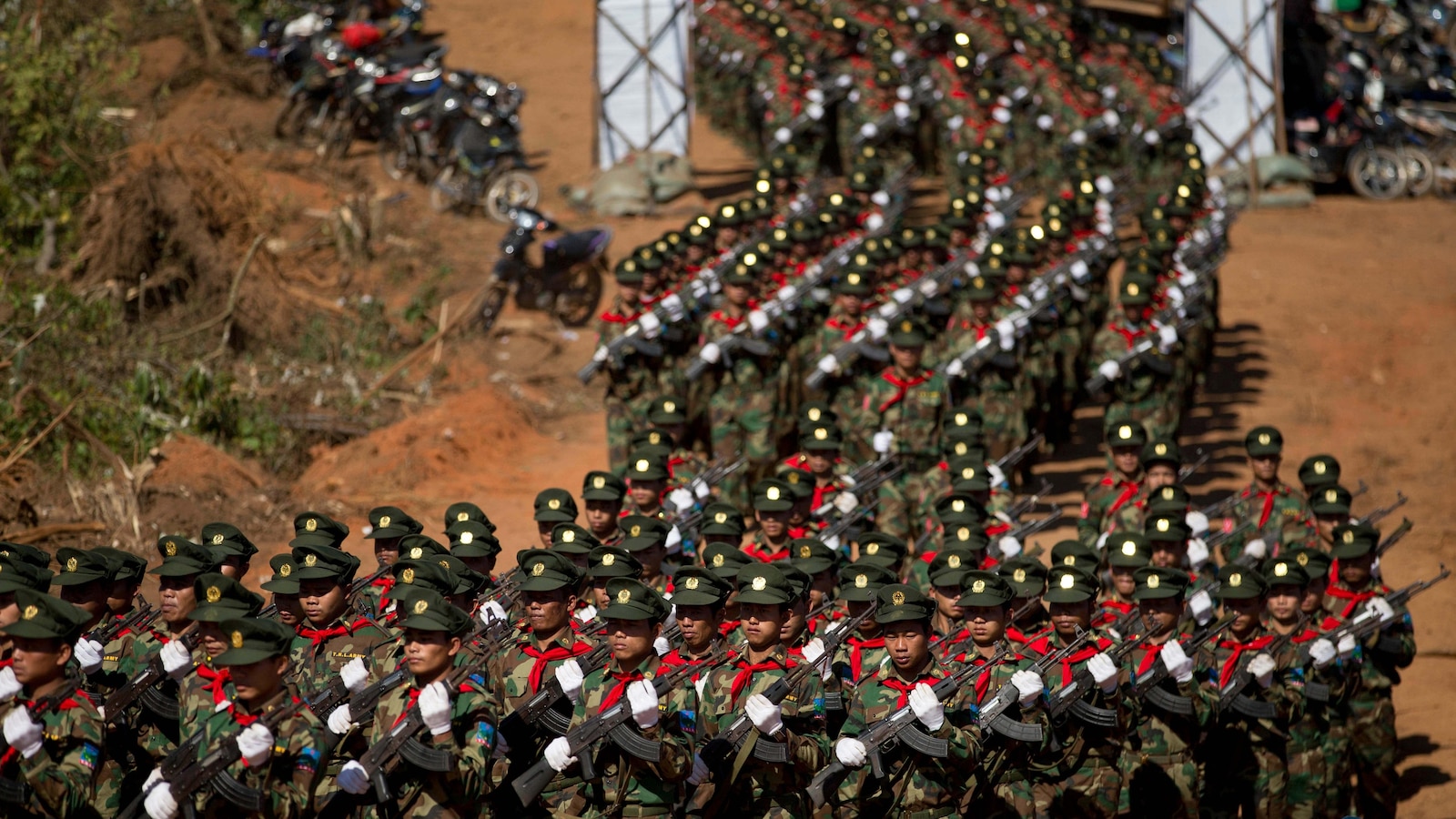














;Resize=805#)
















